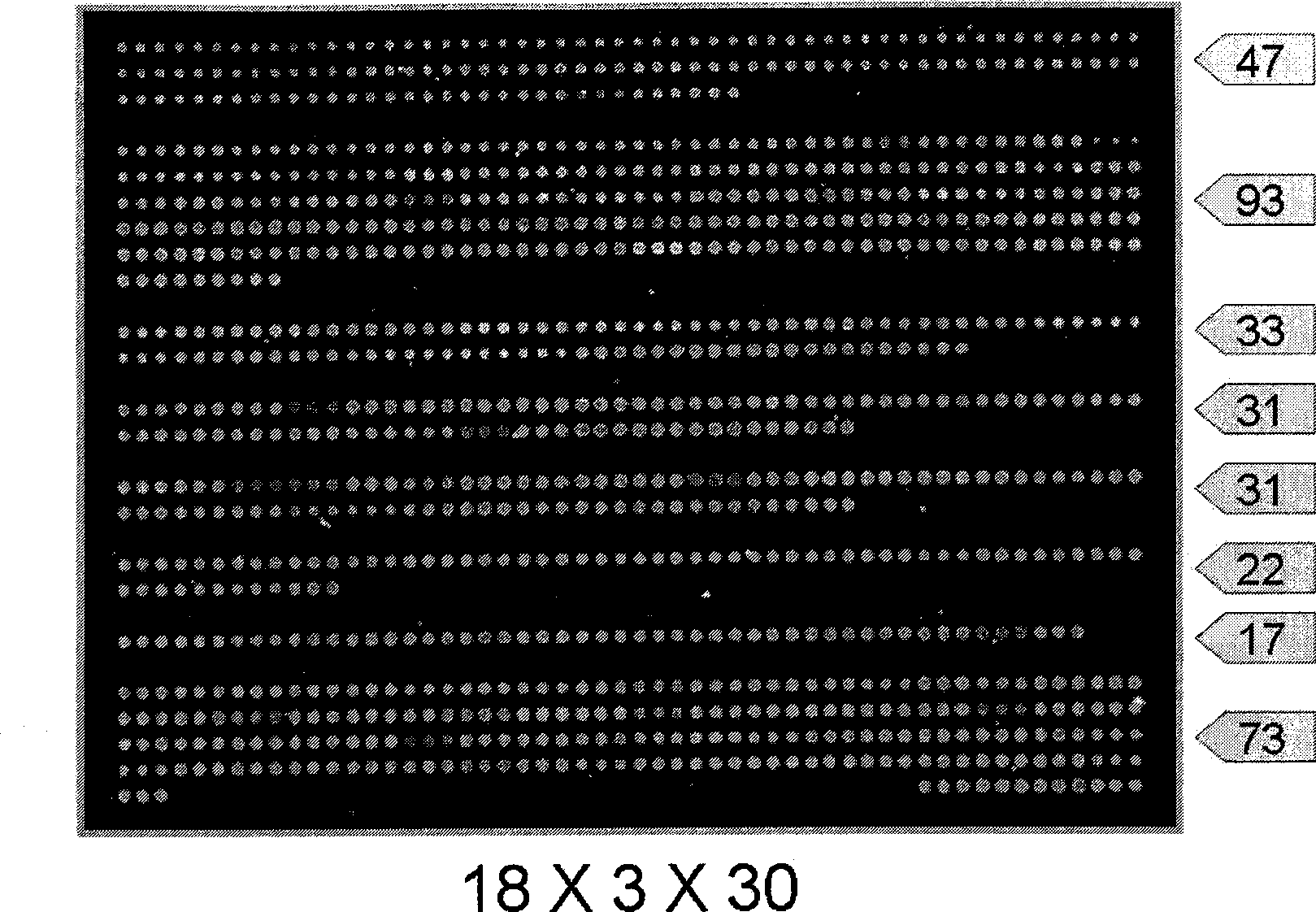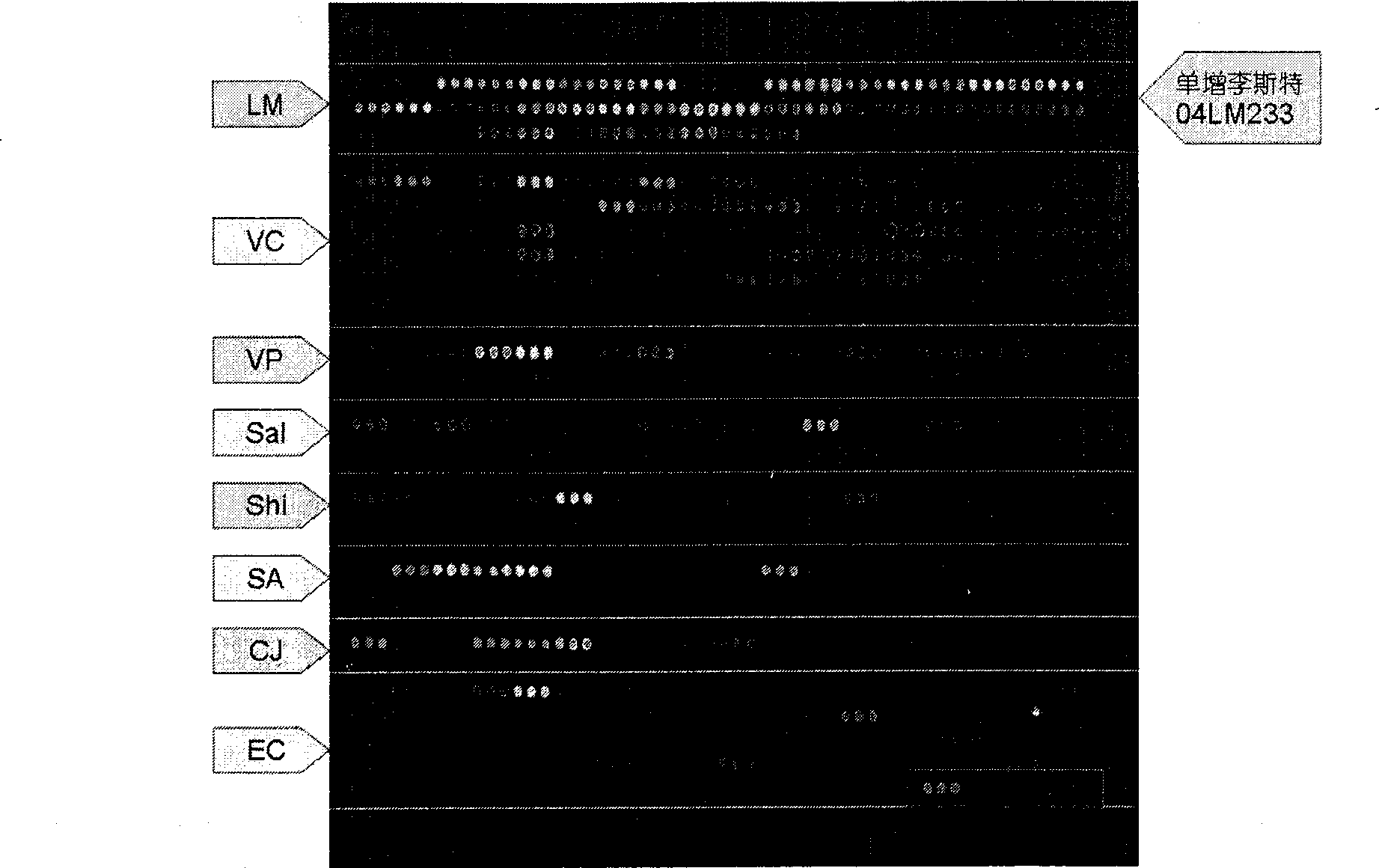Composite gene chip for food-borne pathogenic bacteria detection
A technology of food-borne pathogenic bacteria and gene chips, which is applied in the detection/inspection of microorganisms, resistance to vector-borne diseases, biochemical equipment and methods, etc. The characteristics of high throughput and high information content of gene chips and other issues
- Summary
- Abstract
- Description
- Claims
- Application Information
AI Technical Summary
Problems solved by technology
Method used
Image
Examples
Embodiment Construction
[0050] 1. Determination of target strains for gene chip detection
[0051] The present invention intends to select 8 kinds of food-borne pathogenic bacteria that are more common in Guangdong Province from the above-mentioned strains for the development of the detection gene chip, and they are respectively Listeria monocytogenes (LM), Vibrio cholerae (VC), Vibrio haemolyticus (VP), Salmonella (Sal), Shigella (Shi), Staphylococcus aureus (SA), Campylobacter jejuni (CJ) and Escherichia coli (EC).
[0052] Sample source: All bacterial strains are from the Guangdong Provincial Center for Disease Control and Prevention.
[0053] The oligonucleotide detection gene chip developed for these 8 kinds of food-borne pathogenic bacteria will be named "Biosafood-8 chip" below.
[0054] 2. Design of oligonucleotide (Oligo) probe
[0055] A total of 351 probes were designed for 89 detection target genes of 8 foodborne pathogens, including 1 positive control probe and 3 negative control probe...
PUM
 Login to View More
Login to View More Abstract
Description
Claims
Application Information
 Login to View More
Login to View More - R&D
- Intellectual Property
- Life Sciences
- Materials
- Tech Scout
- Unparalleled Data Quality
- Higher Quality Content
- 60% Fewer Hallucinations
Browse by: Latest US Patents, China's latest patents, Technical Efficacy Thesaurus, Application Domain, Technology Topic, Popular Technical Reports.
© 2025 PatSnap. All rights reserved.Legal|Privacy policy|Modern Slavery Act Transparency Statement|Sitemap|About US| Contact US: help@patsnap.com



